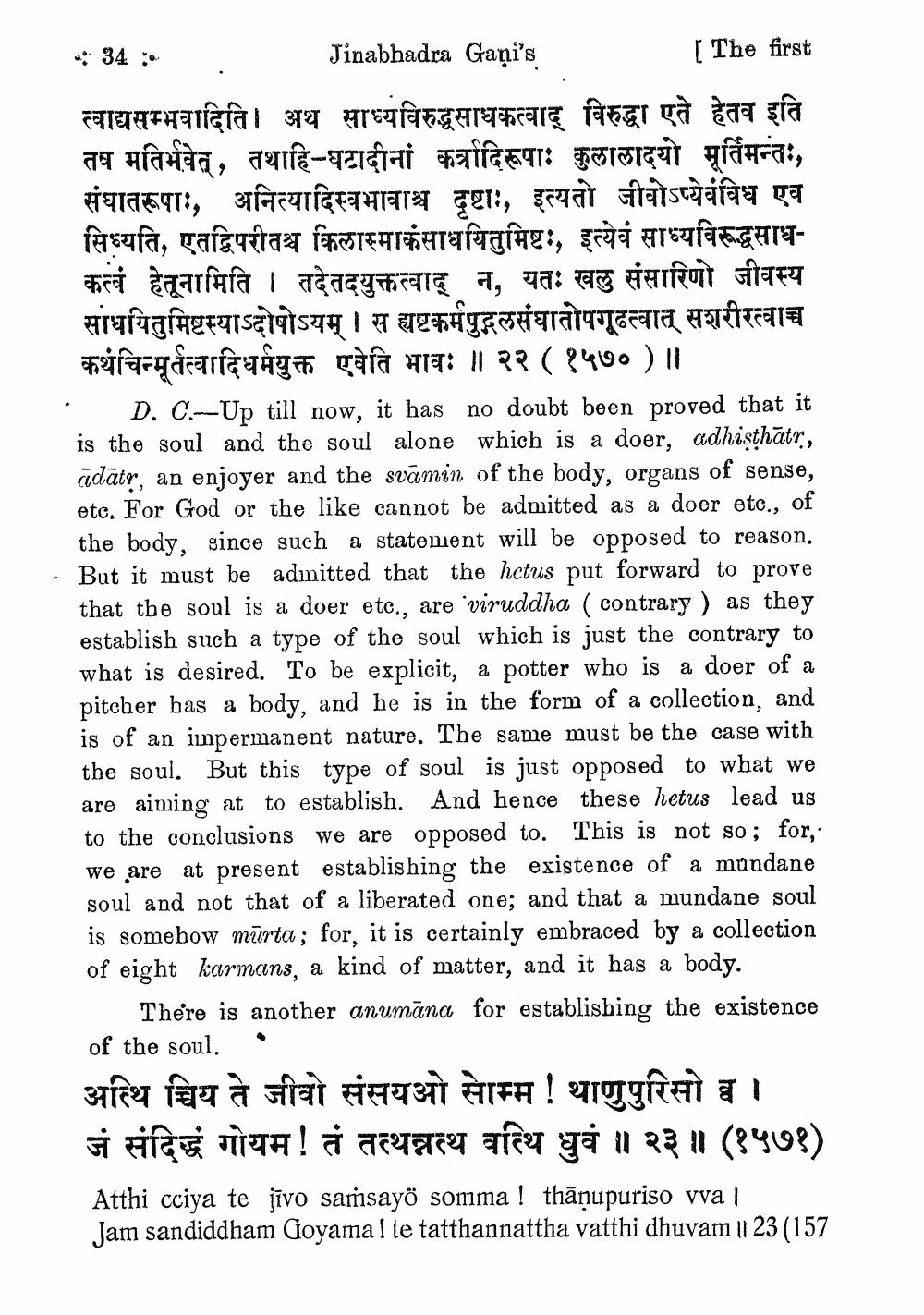________________
*: 34 :- . Jinabhadra Gani's [ The first त्वाद्यसम्भवादिति। अथ साध्यविरुद्धसाधकत्वाद् विरुद्धा एते हेतव इति तष मतिभवेत् , तथाहि-घटादीनां कादिरूपाः कुलालादयो मूर्तिमन्तः, संघातरूपाः, अनित्यादिस्वभावाश्च दृष्टाः, इत्यतो जीवोऽप्येवंविध एव सिध्यति, एतद्विपरीतश्च किलास्माकंसाधयितुमिष्टः, इत्येवं साध्यविरूद्धसाधकत्वं हेतूनामिति । तदेतदयुक्तत्वाद् न, यतः खलु संसारिणो जीवस्य साधयितुमिष्टस्याऽदोषोऽयम् । स ह्यष्टकर्मपुद्गलसंघातोपगूढत्वात् सशरीरत्वाच कथंचिन्मूर्तत्वादिधर्मयुक्त एवेति भावः ॥ २२ (१५७० )।
D. C.--Up till now, it has no doubt been proved that it is the soul and the soul alone which is a doer, adhisthātr., adātr, an enjoyer and the svāmin of the body, organs of sense, etc. For God or the like cannot be admitted as a doer etc., of the body, since such a statement will be opposed to reason. But it must be admitted that the hctus put forward to prove that the soul is a doer etc., are 'viruddha ( contrary ) as they establish such a type of the soul which is just the contrary to what is desired. To be explicit, a potter who is a doer of a pitcher has a body, and he is in the form of a collection, and is of an impermanent nature. The same must be the case with the soul. But this type of soul is just opposed to what we are aiming at to establish. And hence these hetus lead us to the conclusions we are opposed to. This is not so; for, we are at present establishing the existence of a mundane soul and not that of a liberated one; and that a mundane soul is somehow mārta; for, it is certainly embraced by a collection of eight karmans, a kind of matter, and it has a body.
There is another anumāna for establishing the existence of the soul. अस्थि च्चिय ते जीवो संसयओ साम्म ! थाणुपुरिसो छ । जं संदिद्धं गोयम! तं तत्थन्नत्थ वत्थि धुवं ॥ २३॥ (१५७१) Atthi cciya te jīvo samsayö somma! thāņupuriso vval Jam sandiddham Goyamalle tatthannattha vatthi dhuvam 11 23 (157




